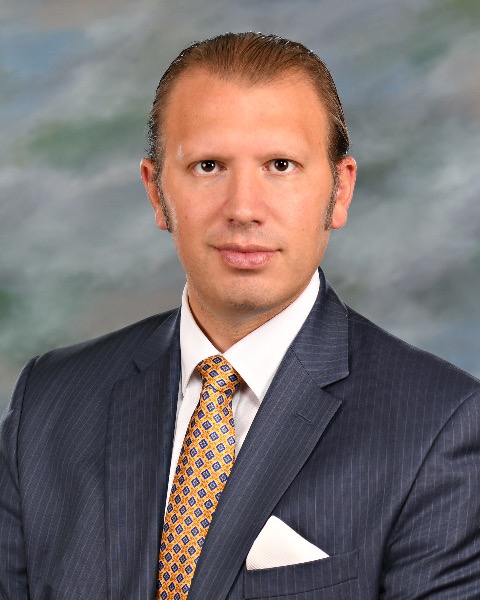Abstract Session
Rapid Fire Research Forum
(AS2) Determination of Risk Benefit Thresholds for Corrective Adult Spinal Deformity Surgery, with Consideration of Frailty and Severity of Sagittal Malalignment at Presentation
Monday, April 24, 2023
8:30am - 8:35am PST
Location: Los Angeles Convention Center, 406AB

Peter G. Passias, MD
Spine Surgeon
NYU School of Medicine
New Canaan, Connecticut, United States
Presenting Author(s)
Disclosure(s):
Peter G. Passias, MD: Cerapedics: Consultant (Ongoing); Globus Medical: Consultant (Ongoing); Journal of Neurosurgery: Spine: Board Member/Officer/Trustee (Ongoing); Medtronic: Consultant (Ongoing); Nuvasive: Consultant (Ongoing); Royal Biologics: Consultant (Ongoing); Spine: Board Member/Officer/Trustee (Ongoing); Terumo: Consultant (Ongoing)
Introduction: ASD correction can significantly improve patient’s quality of life. As many patients requiring spine surgery are elder and often frail, restoration of alignment targets may differ. There is paucity in literature on whether different frailty and deformity states may warrant a different level of surgical invasiveness.
Methods: Operative ASD patients were included. The ASD-FI stratified patients into 2 categories: Not Frail (NF): < 3 and Frail (F): < 3. Patients were also stratified by SRS-Schwab PI-LL: Low (L): < 20 and Severe deformity (SD): >20. 4 groups were formed by frailty and deformity severity: NF Low, F Low, NF Sev, F Sev. ANCOVA determined differences in Surgical Invasiveness (SI) among F/D groups. Logistic regression determined significant association between SI and reaching Ideal Clinical outcome (ICO), defined as: no major complications, no reoperations, and reaching MCID for ODI. Surgical Invasiveness (SI) was normalized to a scale of 0-100 using the SI range. Thresholds for invasiveness and achieving ICO were found through conditional inference tree (CIT) analysis.
Results: 381 ASD patients were included, with categorization of patients into deformity/frailty groups as follows: 35% NF Low, 13% NF Sev, 22% F Low, 25% F Sev. Patients had a significantly different degree of SI: 35 NF Low/Mod, 38 F Low/mod, 48 NF Sev, 50 F Sev (p < 0.001). CIT analysis found NF Sev patients had a higher likelihood of reaching ICO with an SI below 40 (OR: 3.6, p=.04), and F Sev with a SI below 30 (OR:4.6,p=.003). Low/mod groups revealed no significant association between invasiveness and achieving ICO.
Conclusion : Analysis of increasing surgical invasiveness in patients stratified by frailty and baseline deformity showed frail severely deformed patients, compared with non-frail severely deformed patients, had a lower invasiveness threshold above which there was a higher risk of major complications, reoperations, and failure to clinically important improvement in ODI.
Methods: Operative ASD patients were included. The ASD-FI stratified patients into 2 categories: Not Frail (NF): < 3 and Frail (F): < 3. Patients were also stratified by SRS-Schwab PI-LL: Low (L): < 20 and Severe deformity (SD): >20. 4 groups were formed by frailty and deformity severity: NF Low, F Low, NF Sev, F Sev. ANCOVA determined differences in Surgical Invasiveness (SI) among F/D groups. Logistic regression determined significant association between SI and reaching Ideal Clinical outcome (ICO), defined as: no major complications, no reoperations, and reaching MCID for ODI. Surgical Invasiveness (SI) was normalized to a scale of 0-100 using the SI range. Thresholds for invasiveness and achieving ICO were found through conditional inference tree (CIT) analysis.
Results: 381 ASD patients were included, with categorization of patients into deformity/frailty groups as follows: 35% NF Low, 13% NF Sev, 22% F Low, 25% F Sev. Patients had a significantly different degree of SI: 35 NF Low/Mod, 38 F Low/mod, 48 NF Sev, 50 F Sev (p < 0.001). CIT analysis found NF Sev patients had a higher likelihood of reaching ICO with an SI below 40 (OR: 3.6, p=.04), and F Sev with a SI below 30 (OR:4.6,p=.003). Low/mod groups revealed no significant association between invasiveness and achieving ICO.
Conclusion : Analysis of increasing surgical invasiveness in patients stratified by frailty and baseline deformity showed frail severely deformed patients, compared with non-frail severely deformed patients, had a lower invasiveness threshold above which there was a higher risk of major complications, reoperations, and failure to clinically important improvement in ODI.
